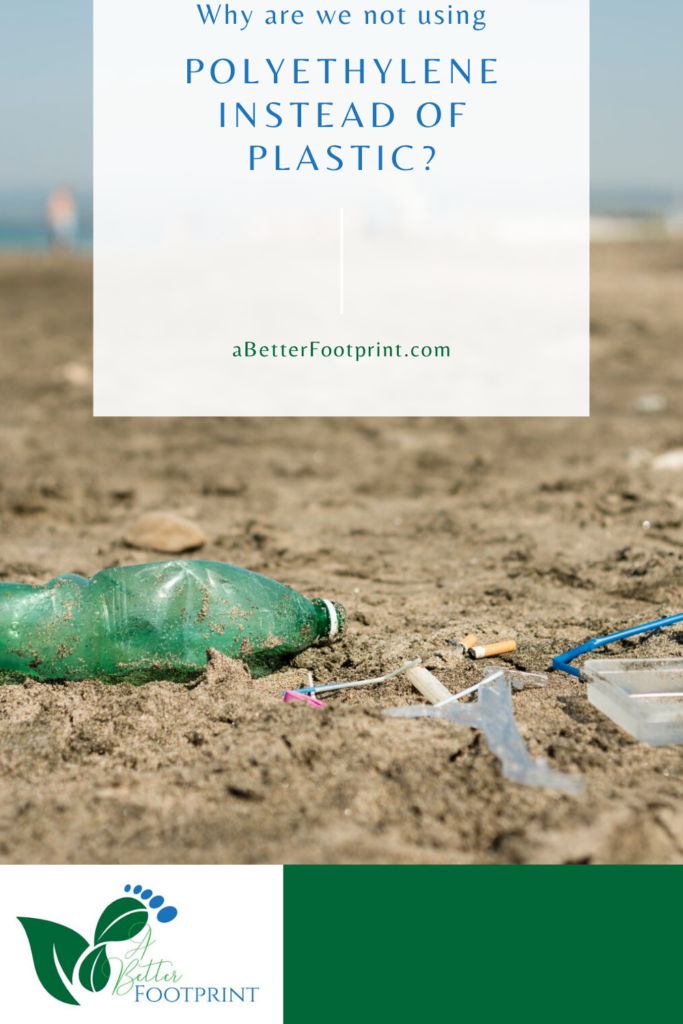First things first. Polyethylene (PE) is a type of plastic, but not all plastics are polyethylene.
PE cannot be used as much as plastic in general, because it has limited uses due to its different composition. Not only does it add damage to the already worsening case of plastic pollution, it is also proven toxic to humans.
Polyethylene has been a popular choice for many years when it comes to making plastic due to its affordability and durability. However, there are several disadvantages that can come with this type of material including low heat resistance as well as the fact that it is not recyclable.
Polyethylene Vs Plastic
Generally speaking, plastic refers to a material easily reshaped through heat and pressure application. On the other hand, polyethylene is a type of plastic known for its high quality transparency and flexibility.
By definition, polyethylene is a light yet tough flexible resin produced through polymerizing ethylene–thus, the name. It could be further classified into seven types.
The two most used types of PEs are: (1) low-density polyethylene (LDPE), produced using high temperature and high pressure; and (2) high-density polyethylene (HDPE), produced using low temperature and low pressure.
Although said to be safer than other plastics, polyethylene’s uses are quite limited that it cannot replace all other types of plastic. The process it takes to produce PEs is also complex, which means more effort is needed in producing PEs to completely eradicate the use of other plastics.
Properties of Polyethylene
- Mechanical properties: PE has low strength and is highly rigid, but has exceptional flexibility and ductility. It is also of low friction, though resistant to impact. It has a waxy feel and could feel crinkly when applied force.
- Electrical properties: Another advantage of polyethylene is its high quality electrical insulation ability. However, despite being resistant to electrical treeing, it becomes easily electrostatically charged.
- Chemical properties: Made of high molecular polycarbons, PE’s chemical behavior could be compared to a paraffin. Almost non-porous, PE does not absorb water.
This plastic type also turns brittle after prolonged sunlight exposure, which arguably contributes to its toxic properties when used to contain food and beverages. When burnt, polyethylene gives off a similar scent to a burning candle.
- Thermal properties: One of the reasons why PEs cannot completely replace plastic is its low melting point. Compared to other thermoplastics, different types of polyethylene record relatively low melting points signifying lower versatility than other plastic types.
Uses of polyethylene
The most common use of polyethylene is food packaging. HDPE, for one, is also known as single-use plastic. Its high density boasts of being non-permeable for oxygen and other gases, making it sound safe as a food container.
It is also used in making shampoo bottles, medicine containers, detergent bottles, and grocery bags. Apart from being used to pack supermarket staples, PE is also used in pipes and fittings, sacks, bubble wraps, and geomembranes.
Because polyethylene is extremely flexible, its usage transcends various industries, too. It is also commonly repurposed after first use. However, despite its versatility to some extent, its environment hazards and inability to be recycled greatly outweigh its benefit.
Dangers of polyethylene
The complexity of plastic is not solely about how it is made, but also how it should be disposed of after use. Polyethylene is not an exemption to these complexities. It has to undergo various chemical processes to be usable.This is where the danger multiplies.
Highly chemical in nature, PE’s toxicity is worsened during the manufacturing process. The mere fact that it is made from petroleum and coal, among other things, is already alarming. What adds to the dangers of polyethylene is the environment where it is produced. PE is known to absorb toxic chemicals during production.
Because it is not easily recyclable, a huge chunk of used PE plastics end up in landfills and only add up to an increased rate of global warming. This is why despite being regarded as a safer choice among plastics, plastic usage cannot just be completely reduced to PE usage.
Common questions about plastic usage
Decomposition process happens in soil through bacteria. Because plastics are chemically treated to be highly durable, soil-inhabiting bacteria does not have enough energy to break down plastic.
Plastic decomposition requires sunlight, not bacteria. However, it would take prolonged sunlight exposure before plastic starts to break down. UV rays striking plastic results in broken molecular bonds that keep it together. Landfills almost never see the light of day, resulting in an accumulation of trash that never gets recycled.
Plastic utensils take 1,000 years to decompose. Highly dense and rigid, they are hard to recycle and are not advisable to be reused either.
A high percentage of polyethylene is turned into single use plastics. Its toxicity poses high risks to human health, making it impossible to be treated as a plastic alternative.


